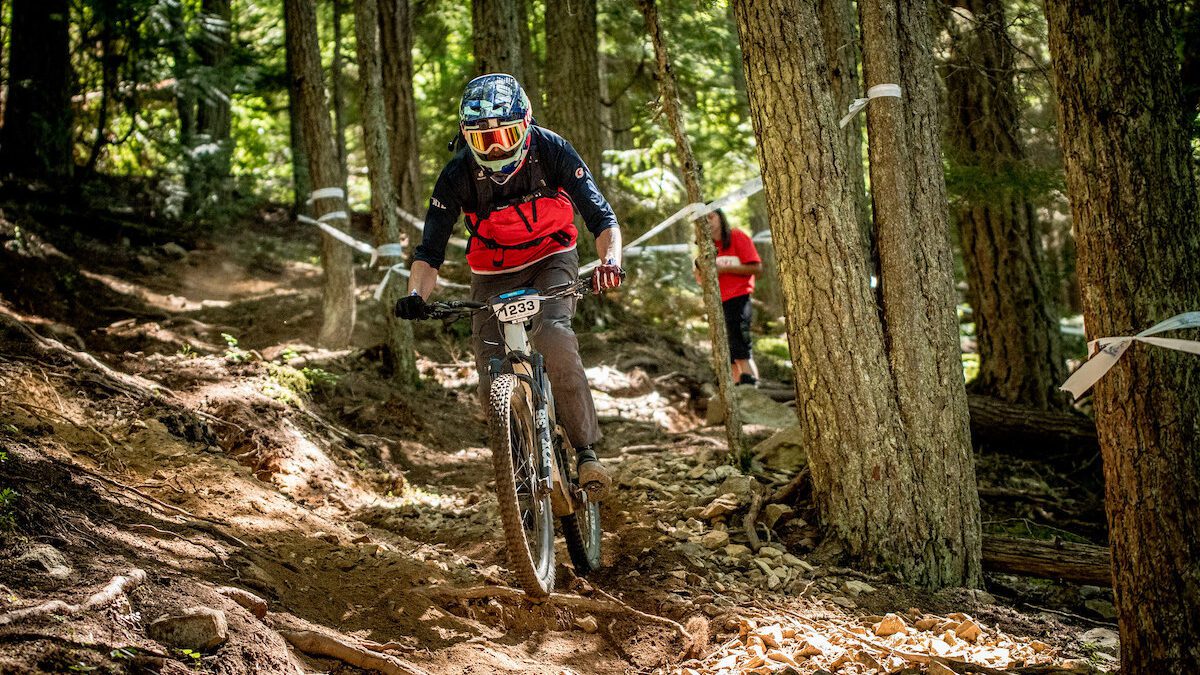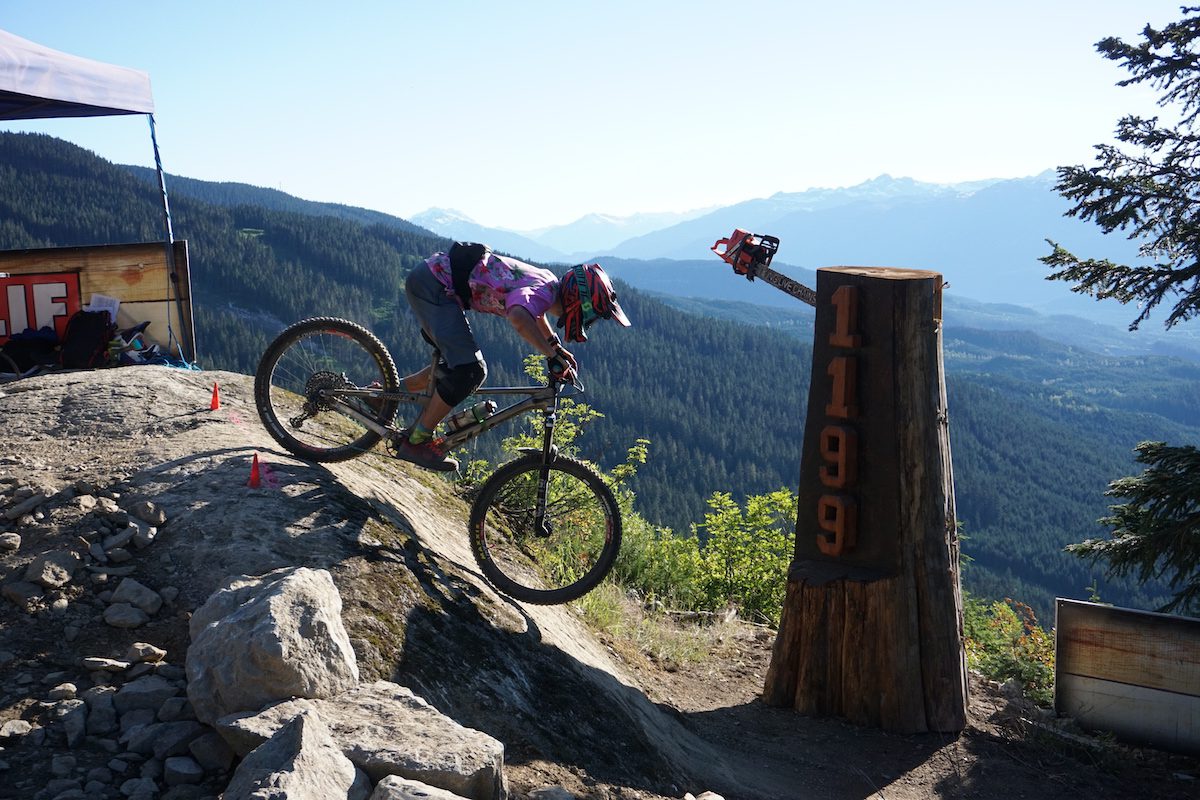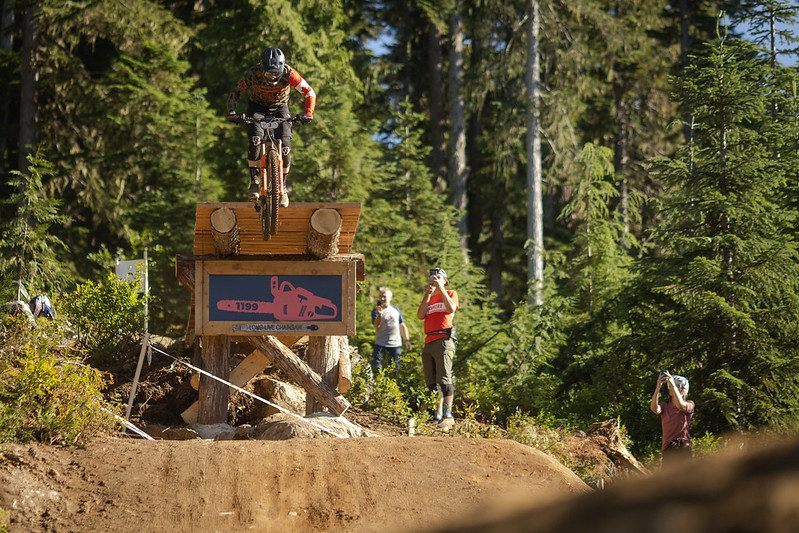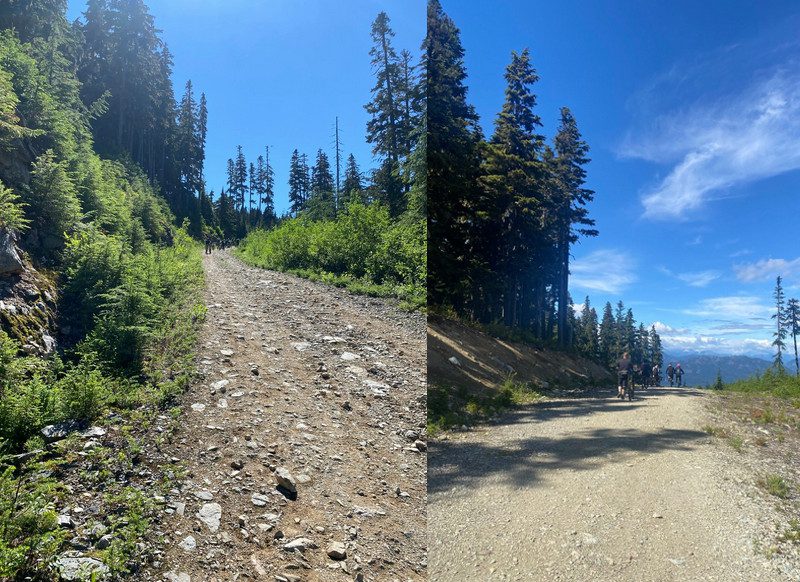How hard is Whistler’s Enduro World Series, really?
Getting humbled by Crankzilla EWS

Enduro World Series – now Enduro World Cup – is the pinnacle of the still somewhat new enduro race format. It pits riders against the hardest tracks (and some pretty brutal climbs) around the globe. Among international enduro venues, Whistler’s Crankworx week race is notorious for its physical and technical difficulty. Hard enough it has earned the nickname “Crankzilla.”
But how hard is it to race Crankworx EWS, really? I decided to sign up and find out.
With Crankworx returning to Whistler in 2022 after two years away, it was a great opportunity to jump in with the world’s best and see just how hard an Enduro World Series course is. Unsurprisingly, going from keyboard to race course, things went a little off the rails.
How did I do an EWS?
EWS had a somewhat unique race structure where anyone could sign up for the EWS100, an amateur event held on the exact same course as the pros, one day earlier. It’d be like signing up to race Fort William the day before the World Cup rolls through. Same course, same tape and, for EWS, same transfer stages. The only difference between the 100 and the EWS was that the pros did an extra Pro Stage on the same day the EWS100 (and EWS80) riders are doing their race day. It meant that, as long as you thought you could actually ride the course, you could sign up to race the same trails as the best pros in the world. Even if you are just someone who works for a cycling publication but rarely races enduro. Riders that did well enough could earn points to move up to the big show the next year.
With enduro moving under the World Cup banner this is, for the most part, no longer an option. Which is too bad, as there are few opportunities for us mortals to attempt an experience so close to what the pros race and in such similar conditions.

The practice: trying to take it easy
Practice day at the EWS, and now at the World Cup, is basically just riding the entire race day course. It’s the only chance to see the tracks you’ll be riding before you race them. It’s not mandatory, you can skip sections but, with how hard pro enduro races are, it’s really not a good idea. Why would you want to? Because last year’s Whistler course covered 41km of riding with 1,800m of elevation gain and, with one gondola bump up the mountain 2,800m of elevation loss.
That is a big day on the bike, even if it’s at “practice” pace. And there’s no real way to make gaining 1,800m of elevation in less than 15km of riding easy. All four of the transfer climbs between timed stages in Whistler averaged over 10 per cent grade. One 4.5km stretch included two significant stretches of grunting up a chunky gravel service road at over 20 per cent grade. And, in enduro, that is your “rest.”
Once you’re at the top of those climbs, the racing starts. To add a bit of spice, it had rained before our practice day, making Whistler’s rocks and roots a slippery tangle with minimal traction. All in, it was a seven-hour day on the bike. The idea of waking up and doing it all again the next day, but faster, was more than a little daunting.
The race Pt. 1: A bright start on Blackcomb
EWS100 Whistler was, without a doubt, one of the physically and mentally most challenging races I have ever done. I’ve raced cross country, some XC marathons, a downhill and several other enduros. I don’t think any came close to the demands Whistler put on fitness and technical skills.
To be honest, I was pretty beat after the practice day. The idea of trying to race the five stages had me a little nervous. The spectacle of riding up Whistler’s bobsled track from the 2010 Olympics was a welcome distraction from the challenge to come.
I got the first climb out of the way with little issue and was actually feeling better than I expected. The first race stage was on Microclimate. It’s two kilometres of Whistler tech dropping 400 metres of elevation in, for me, just under nine minutes. Like the rest of the day’s stages, it’s a trail that I usually find a fun challenge. Racing it, though, is an entirely different endeavor. My plan was to ease into the day and build pace over the stage. Instead, I was already getting quite tired halfway down. Riding a trail like that without the usual breaks I’d usually take is exhausting.
Thankfully, with the trails having had a day to dry out, the course was in near-perfect condition. The dirt was mostly tacky and the roots and rocks weren’t so slippery anymore. Stage two was similar in length but, other than one 15-second uphill sprint, much easier to carry some kind of momentum down. From there, we had a nice bump up the hill on the Whistler Village Gondola and a short downhill section to warm up again before starting Stage 3.

The race pt. 2: Getting beat up by Crankzilla
The next three stages averaged about 550m of elevation loss. Stage 3 and 5 were faster bike park stages. Stage 4 was the super-technical Ride Don’t Slide trail. Before dropping in, there was the punishing, brutal climb in 30-degree heat. While everyone was working hard to make it up the hill at all, the fact that it wasn’t a timed climb (just a matter of survival) meant people quickly formed groups to get each other up the hill in good spirits. After that effort, it was all I could do to hold on down the steep, rooty stretches of tech of Ride Don’t Slide upright, never mind attempt something that would actually resemble racing.
After another steep but, thankfully, mostly shaded climb, we dropped into the fifth and final stage. This was also the weekend’s Pro Stage. It started with the brand new, at that point unfinished, 1199 trail. It was designed as a downhill race course, and hosted the Canada Open DH this year, and included several big, optional drops. Thankfully, the largest one was closed for the amateur race.
After that, there was an uphill sprint to get to the next section of trail. For the top pros, it was 1:20 of hammering on the pedals. Already toast, physically, I took a full minute longer of flailing at the pedals to get over the mid-stage climb. That might not sound like a long time to anyone used to racing cross country but, five hours into the day and already several minutes of intense focus and effort to get down 1199, it nearly destroyed me.
The race ended with a series of bike park classics. The next time the course straightened out enough to pedal, I just sat down, tucked and tried to smile at the nice volunteer encouraging me to sprint. I dropped off the final ladder bridge and rolled across the finish line in Whistler Village, absolutely toast. A few of us who had been suffering up the climbs together went and found a beer and burger to celebrate the big day out.

The Aftermath
The two days of EWS 100 thoroughly exhausted every part of my body, even without any good crashes. The relentless steep climbs drained my legs, even if they weren’t a timed part of the race. My arms, shoulders and wrists were toast from trying to hold myself up off the bars on long, 10+ minute descents all day. Mentally and physically, I was exhausted from 14 hours on the bike over two days.
Was it harder than I thought it would be? Absolutely, and I thought it was going to be very hard. Other than the gondola ride, there were very few easy parts of the day. You were either getting drained by the effort of just getting up the climbs or beat up by the long, constantly engaging descents that were the actual timed part of the day.
Was it fun? Absolutely. People come from all over the world to ride in Whistler, and especially to see Crankworx. I met a ton of riders from all different parts of the globe, from Asia to Eastern Europe, over the course of the day. If I did it again, though, I would want to be much better prepared, physically.
This year, Crankworx is hosting Canadian enduro national championships in the absence of a World Cup enduro event. Organizers are returning to a mix of classic race tracks from the EWS days, including two of Blackcomb’s hardest trails and the iconic Top of the World stage, and newer trails. Making it part of Crankworx means there’s still an international roster on the start list, too. I won’t be lining up this year. But I’ll be watching with a better respect for just how hard those athletes in all categories are pushing themselves on race day and all race weekend.


